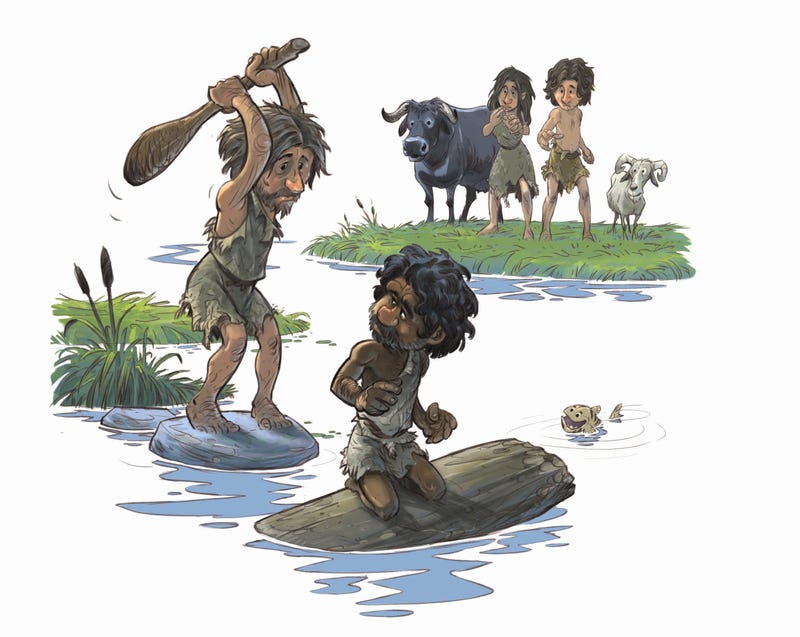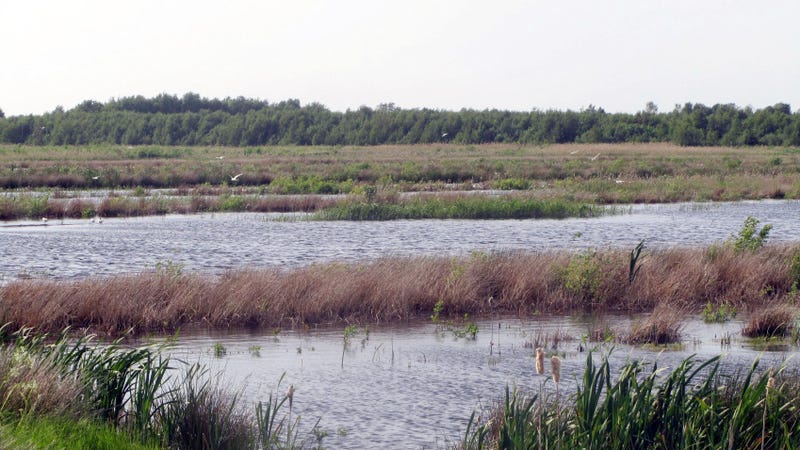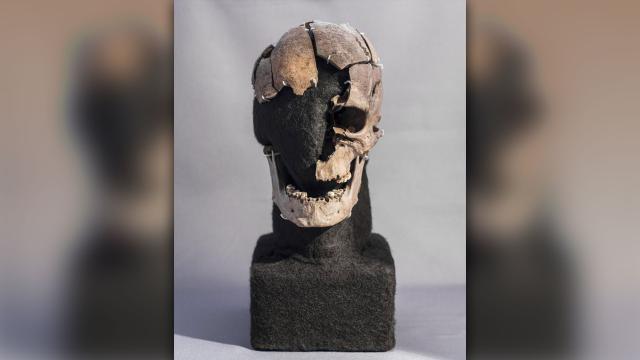When you die, what story will your teeth hold for the geneticists of the future? Hopefully the tale will be more uplifting than that of Vittrup Man, a forager-turned-farmer whose skull was smashed in over 5,000 years ago in what is now Denmark.
A team of researchers recently scrutinized the isotopes locked away in Vittrup Man’s teeth, and they were able to reconstruct his life history from his childhood until his death. They determined that the man was from coastal Scandinavia. Later in life, he moved to Denmark, in a farm setting, near to where he ultimately was killed in an act of ritual violence. The team’s research is published today in PLoS One.
“Before our study, this was just a human skeleton of unknown date,” said Anders Fischer, an archaeologist at the University of Gothenburg and the paper’s lead author, in an email to Gizmodo. “Now we know not just his date and foreign ancestry, but also a lot about his health conditions and geographic and dietary life history.”

Vittrup Man’s remains—a shattered skull and a few bones—were found in 1915 in a Danish peat bog, alongside a hardwood club. Bogs are anaerobic, making them great venues for natural mummification.
A recent analysis of another bog body, Tollund Man—thought to have been killed in a ritual sacrifice in Jutland—turned up the remnants of his last meal in his preserved, 2,400-year-old stomach. Indeed, European bogs are filled with bodies, many of which were evidently killed by violence, ritualistically or otherwise, before ending up preserved in the peat.

Vittrup Man was between 30 and 40 years old when he died. Only now, by combining DNA analysis with study of the isotope levels in his teeth and sequencing his tartar, have researchers been able to resolve the path the man took to that bog.
Until he was a tween, the researchers found, Vittrup Man mostly ate marine mammals and fish, suggesting he lived on the coast. But by the time he was 18, he was living in Denmark, and his diet had turned to farm foods like goat or sheep. Genetically, Vittrup Man was closely related to communities living in present-day Norway and Sweden, corroborating the coastal environment suggested by his diet.
Moving to Denmark, the man’s skin would have been darker than those around him. In a University of Gothenburg release, Fischer noted that “it is the first time scientists have been able to map a north European person’s life story in such great detail and in such a distant past.”
The team believes the hardwood club he was found with may be the weapon that killed him. “Perhaps we should understand him as a slave who was sacrificed to the gods when he was no longer fit for hard physical labor,” said study co-author Kristian Kristiansen, a researcher at the University of Gothenburg, in the release.
Vittrup Man suffered at least eight blows to the head, splitting his skull. While the circumstances that led to his death are still unclear, we know now much more where he came from and how he lived. Fischer told Gizmodo that the team is currently working to decipher the life histories of similarly preserved remains.
